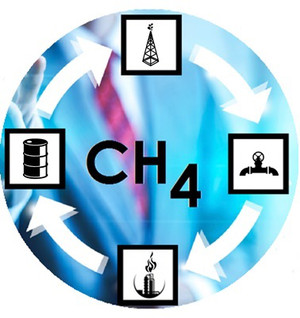 UNECE is exploring current practices and technologies along the value chain in key energy-related extractive industries, namely coal, natural gas and oil. The approach includes four subject-specific pillars, each representing one of the relevant energy-related extractive industries, namely: Coal, Downstream Oil (processing through distribution), Downstream Gas, and Upstream Oil and Gas (i.e. exploration and production). The work is intended to be relevant at all levels such as facility-level, national-level, and international-level.
UNECE is exploring current practices and technologies along the value chain in key energy-related extractive industries, namely coal, natural gas and oil. The approach includes four subject-specific pillars, each representing one of the relevant energy-related extractive industries, namely: Coal, Downstream Oil (processing through distribution), Downstream Gas, and Upstream Oil and Gas (i.e. exploration and production). The work is intended to be relevant at all levels such as facility-level, national-level, and international-level. Within the framework of the project for which UNECE received funding from the United States Environmental Protection Agency (US EPA) and which it conducts in close cooperation with the Global Methane Initiative (GMI) focus is given to three pillars, namely (1) Upstream Oil and Gas (2) Downstream Gas, and (3) Downstream Oil.
The objective of the project is to increase capacity of the UNECE Member States for measurement, reporting, and verification (MRV) and to reduce methane emissions in Upstream Oil and Gas, and in Downstream Gas industries.
Please find the Best Practice Guidance for Effective Methane Management in the Oil and Gas Sector: MRV and Mitigation at the website dedicated to the document. The content of the document was approved by the Committee on Sustainable Energy at its 28th annual session held on 25-27 September 2019 in Geneva, Switzerland.
Please find the Best Practice Guidance for Effective Methane Management in the Oil and Gas Sector: MRV and Mitigation at the website dedicated to the document. The content of the document was approved by the Committee on Sustainable Energy at its 28th annual session held on 25-27 September 2019 in Geneva, Switzerland.
Building Blocks
Phase I
The first phase of the project focused on identifying the scope and breadth of methane emissions in the Oil and Gas industries. This goal was achieved through the following activities:
- review of existing data on sources of methane emissions in Oil and Gas industries;
- analysis of data on estimated methane emissions from the Oil and Gas industries in UNECE member States;
- determination of the largest-emitting sources of methane in the Oil and Gas industries.
Phase II
Building upon the information gathered in the first phase, the second phase reviewed and assessed the current MRV systems on a range of scales (e.g. at the facility, national, and international levels), as well as available information regarding strategies, practices and/or technologies for MRV of methane emissions, such as national regulations and information from governments, industry, academia, and NGOs. As a result comprehensive best practices for MRV of methane emissions in the Oil and Gas industries were identified.
Phase III
The third phase, drawing from government and industry experience in addressing methane emissions, identified best practices for reducing methane emissions in the Oil and Gas industries.
Phase VI
The fourth phase consists of dissemination of the product (Best Practice document) developed on the basis of the findings from the second and third phases of the project (best practices and case studies for (1) MRV and (2) reduction of methane emissions in the Oil and Gas industries) through capacity building workshops and seminars. It is being implemented since 2020.
- Documents
-
Documents Project Document Concept Note Organizational Chart - Presentations
-
Presentations Methane Management in Extractive Industries (Upstream Oil and Gas / Downstream Gas)
Mr. Torleif Haugland and Mr. Michal DrabikPDF

